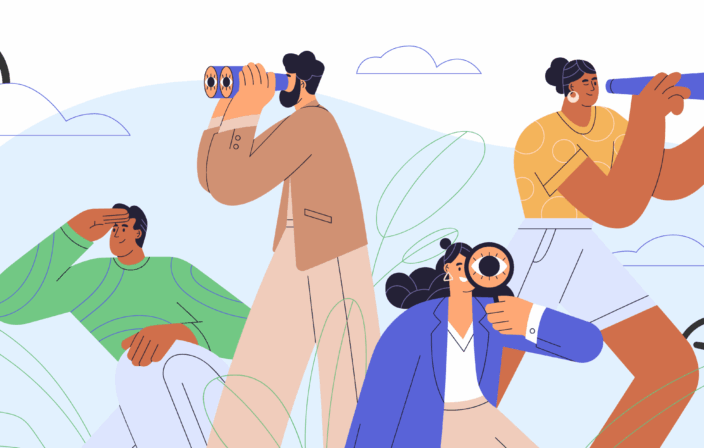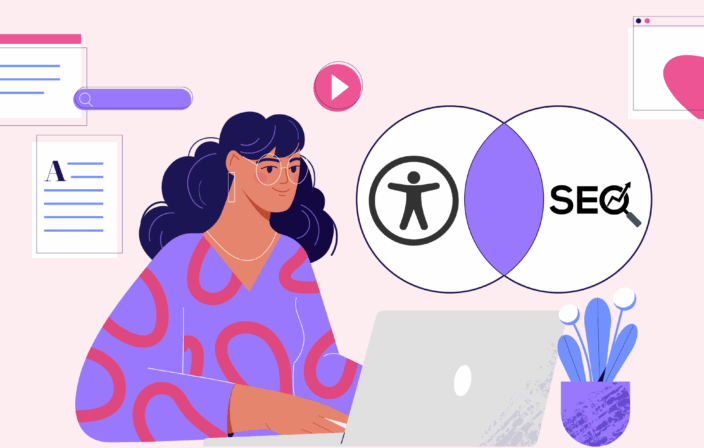One of the “business benefits of accessibility” that people like to throw around is that accessibility will improve your site’s SEO. This is technically true, but it’s important to be clear about what accessibility can actually do for your SEO.
Note: In this post, I will conflate SEO with optimizing for Google search. I do realize there are other search engines worthy of consideration; but given that the overwhelming majority of search traffic goes through Google, most SEO work is going to be very Google-centric. Hence, the focus on Google.
Overlapping Best Practices
Here is a list of areas where SEO and accessibility best practices overlap:
- Descriptive link text
- Descriptive alt text
- No informational text inside images
- Abbreviations
- Clear writing
- Descriptive headings
- Correct use of heading tags
- Descriptive page titles
- Accessible PDFs
- Captioning video/audio content
If you want to dig more into why these are important for accessibility, please check out my recent post on Accessibility Strategies for Your Content Team.
Optimizing for Robots
A favorite adage of Accessibility = SEO advocates is, “If screen reader software can successfully navigate and find stuff on your page, then so can a Google-bot!” So, from an SEO perspective, these practices are important because they can help search bots index your pages more efficiently and help them to determine when a page is or isn’t appropriate for different search terms.
Here’s where things get a little sticky.
- Search-bots are trying to determine what your content is about – what words show up, how often, and where. (This isn’t all they’re looking for, but the rest is less important to accessibility.) So optimizing for robots means focusing on keyword optimization and making sure your alt text, link text, headings, etc. include the keywords and associated keywords you want to rank for. But if you prioritize keyword optimization over clarity and readability, it will hurt your accessibility. (And do not use these page elements for keyword stuffing – that’s bad for accessibility and SEO.)
- Keyword optimization will help you rank higher, but not necessarily highly. It could move your page from the 17th spot to the 13th spot, but it won’t take you from the 17th spot to the 3rd spot. That’s probably not the kind of business benefit that’s going to inspire your executive to start investing in accessibility.
Optimizing for Search Means Optimizing for Usability
Google’s search algorithms have gotten pretty sophisticated, and how people behave on your site often plays a bigger role in your search ranking than simply have the right words in the right places. If someone goes to your page from their search results only to return to their search a moment later, your page wasn’t the right result for their search query and may rank lower in similar searches. If they go to your page, hang around for a few minutes, and navigate somewhere else on your site, then your page was a good fit for the initial search and will rank more highly in similar searches.
This means that, ultimately, prioritizing usability is good SEO. Creating clear, informative content that is well-structured, easy to follow, and designed to help people quickly find the specific information they’re looking for is good SEO. If people with disabilities can fully engage with your site and find what they’re looking for, your site has the potential to engage up to 1 billion users that your inaccessible search competitors can’t engage. That is a massive business benefit.
This does not mean keywords are not important. If you are writing good, descriptive headings, link text, etc., your keywords and related terms will naturally fit into those page elements. And you definitely want to make sure you’ve got your keyword in your meta description, page title, a heading, and 2 or 3 times in the rest of the page content. If you can’t organically fit a keyword in those places, you may need to rethink your keywords (or rethink your content).
Accessibility helps everyone. Providing an accessible experience for people with disabilities will improve the usability of your content and improve your search engagement across the board.
In Conclusion
Accessibility can absolutely improve your SEO. All of those best practices I listed earlier should definitely be part of your Content Team’s Accessibility Strategy, but think about how all of those elements contribute to the usability of your content for humans and technology. Be sensible about keyword usage, make sure you’re using correct markup, and talk to your design and development teams about the impact accessibility can have on your search engagement.




